Can I Restring My Pearl Jewelry

Depending on the wearing frequency, threads of pearl jewelry become loose, and knots get dirty or fuzzy.
If you still wear the jewelry, the strands eventually break, and you may lose the precious gemstones.
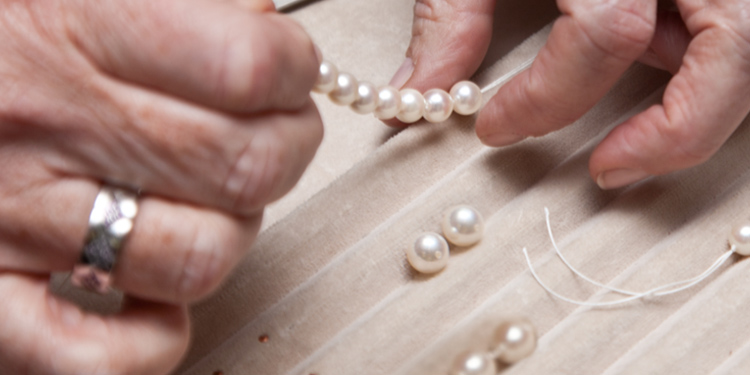
On top of that, a single discolored or scratched pearl can impact the luster of the whole necklace.
To change the damaged pearls or prevent strand breakage, rest the strand as soon as you notice any defects.
Want to restring pearl jewelry? Look for quick steps with the tips below to rest your loose pearl strand.
When Should I Restring My Pearls?

Regular use or long breaks of pearl jewelry can make the strand dirty, fuzzy, stretched, or discolored.
Let's search for these signs to pick the perfect resting time.
Dirty and Fuzzy Knots
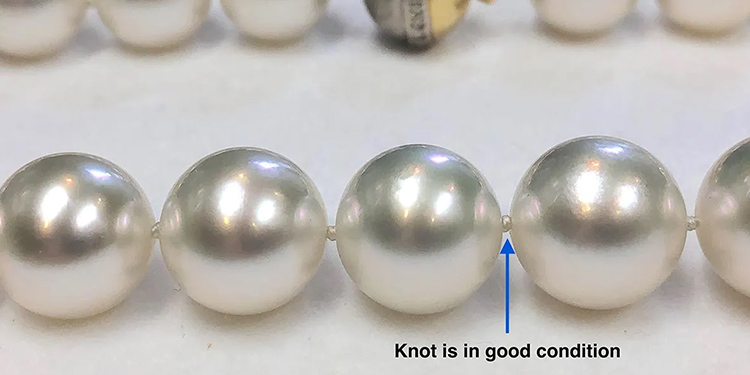
When wearing a traditional pearl necklace, the pearl string includes knots to prevent the moving or rubbing of pearls.
Now, the shapes of pearls are too engaging to go through the cleaning process.
Due to sweat or body oil, these invisible knots become dirty and impact the pearl luster.
Also, wearing pearl necklaces causes rubbing of pearls with knots.
Even regular wearing makes the knots fluffy or fuzzy.
Besides, these knots shred over time and break within a few years.
If you notice these signs, it's time to restart your pearl jewelry.
Stretching of Threads
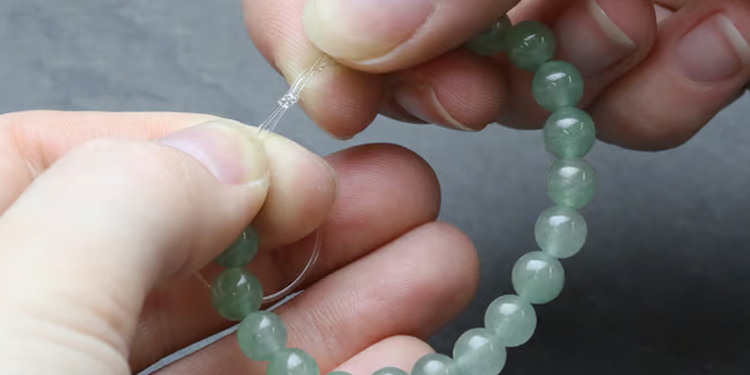
While the thread becomes weak, the necklace starts to stretch and leaves gaps among the pearls.
Even these signs cause the twisting of beads and make the strand longer.
As a result, the thread snaps quickly and looks terrible after wearing it.
If the knots of pearl strands shrink continuously, it pulls the pearls together.
Based on Timeless Pearl, the pearls can move or rub together once the drill hole pulls.
Hence, the surface faces scratches or spots, leading to the damage of beautiful luster.
Pearl Discoloration
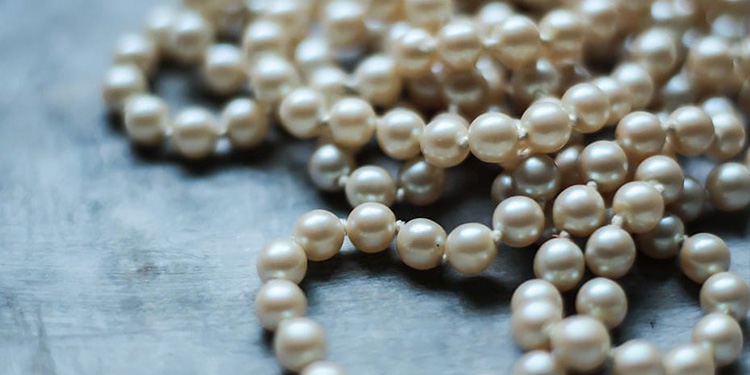
Due to the organic buildup, pearls can react with silver or gold.
In short, the gold or silver jewelry scratches the nearby pearl beads.
Besides, the reaction with metals blackishes the pearl in the long run.
Moreover, pearls become yellowish while dealing with sweat, body oil, or chemicals.
If you can't restore the shine, these one or two discolored beads decrease the beauty of the whole strand.
How To Restring Pearls Jewelry
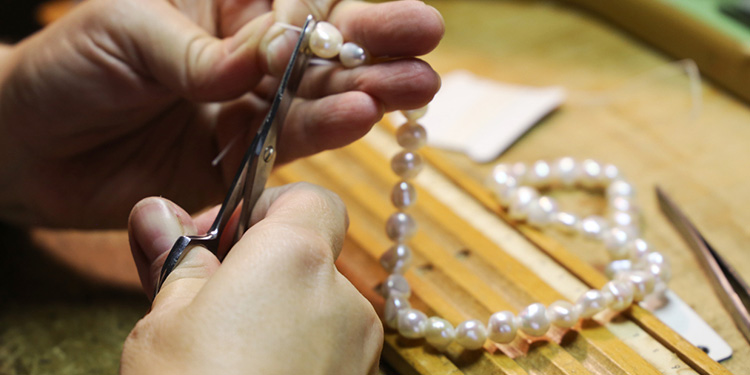
To restart your pearl jewelry, follow the steps below in detail.
Choose a Proper Thread
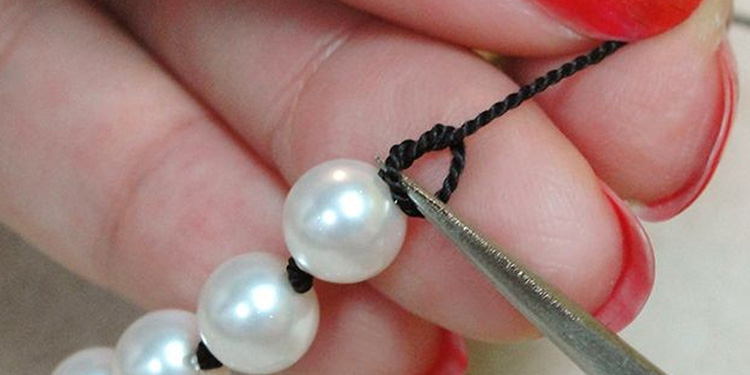
Before stringing the pearls, pick a high-quality thread to prevent damage or loss of pearls.
Pick thin and robust silk threads for better if you're dealing with a full-strand pearl necklace.
Also, combine 2 to 3 silk threads for medium to large pearls to make a long-lasting necklace or bracelet.
wikiHow suggests using colorful thread to restring colored pearls to match the vibe of shine.
On the other hand, cotton, copper, and nylon wire can work well, while pearl jewelry includes other stones or metal beads.
Regular thread can't bear the weight of these heavy stones or metals and breaks.
So, pick a thread according to the bead type and weight.
Gather Pearls
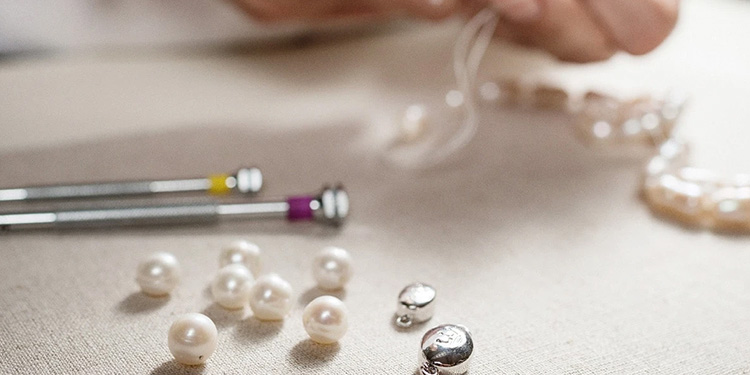
Once you cut the old string, pearls can roll away due to the round or semi-round shapes.
To avoid the roll-away, place a tray under the strand. Next, check out the damaged or discolored pearls and replace them with new ones.
After that, maintain a proper serial to line the pearls up and place them on a beading tray.
If the jewelry includes stones or metals, put them in the planned order to string quickly.
Use Beading Needle
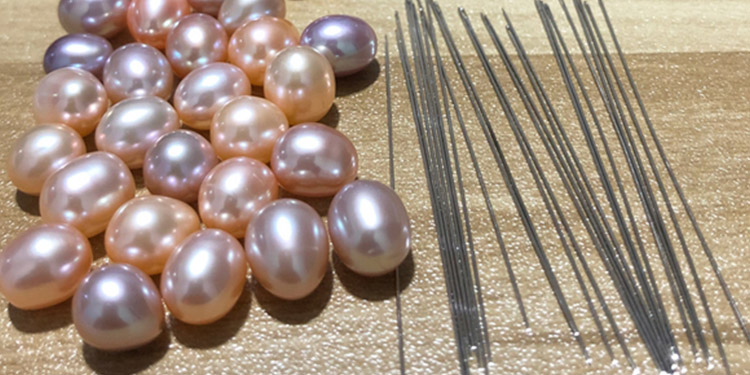
After gathering the gemstones, pick a one sharp point beading needle with a split thread hole.
As per Quick Repairs, pass the needle through a single pearl and create an overhand knot at the end.
Meanwhile, repeat the process for the remaining beads to form a perfect strand.
Further, create a French wire loop at each end to protect beads against abrasion.
Use the knotting tool to make a final knot and cut the remaining threads.
Tips & Tricks For Perfect Restringing

For perfect restringing of pearls without any scratches, you can follow our tips and tricks:
●While matching the size or serial, keep the pearls on a beading tray to avoid rolling away.
●Pick a thread longer than the necklace to get enough space to make knots on pearls.
●Use a sharp, thin, and long needle so that beads can easily slide through the needle.
●Try a regular knot on both sides when the centered stone or gold comes to balance the strand.
●Keep an extra inch before cutting excess thread to get space for securing with claps or hooks.
Warp Up
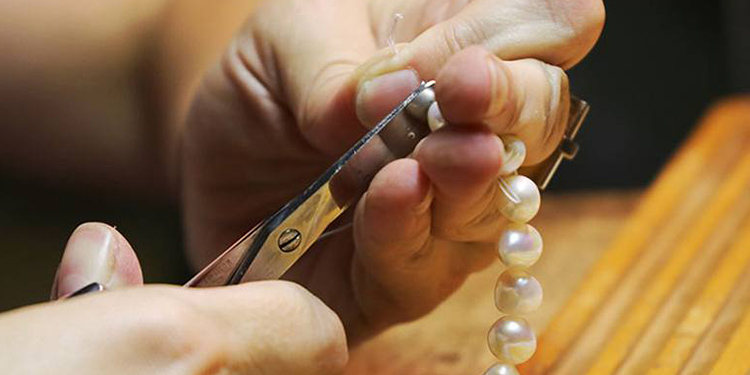
Dirty or fuzzy knots, stretched threads, and discolored pearls impact the luster of your jewelry.
If you inspect these signs, change the thread or discolored pearls.
Even a loose or weak thread eventually breaks and causes the loss of your precious gemstone.
However, stringing may take time and scratch the pearls.
To avoid the damage, follow our tips and tricks for quick restringing.
So, restring the pearl necklace to increase its durability and give an updated look!


Leave a Comment